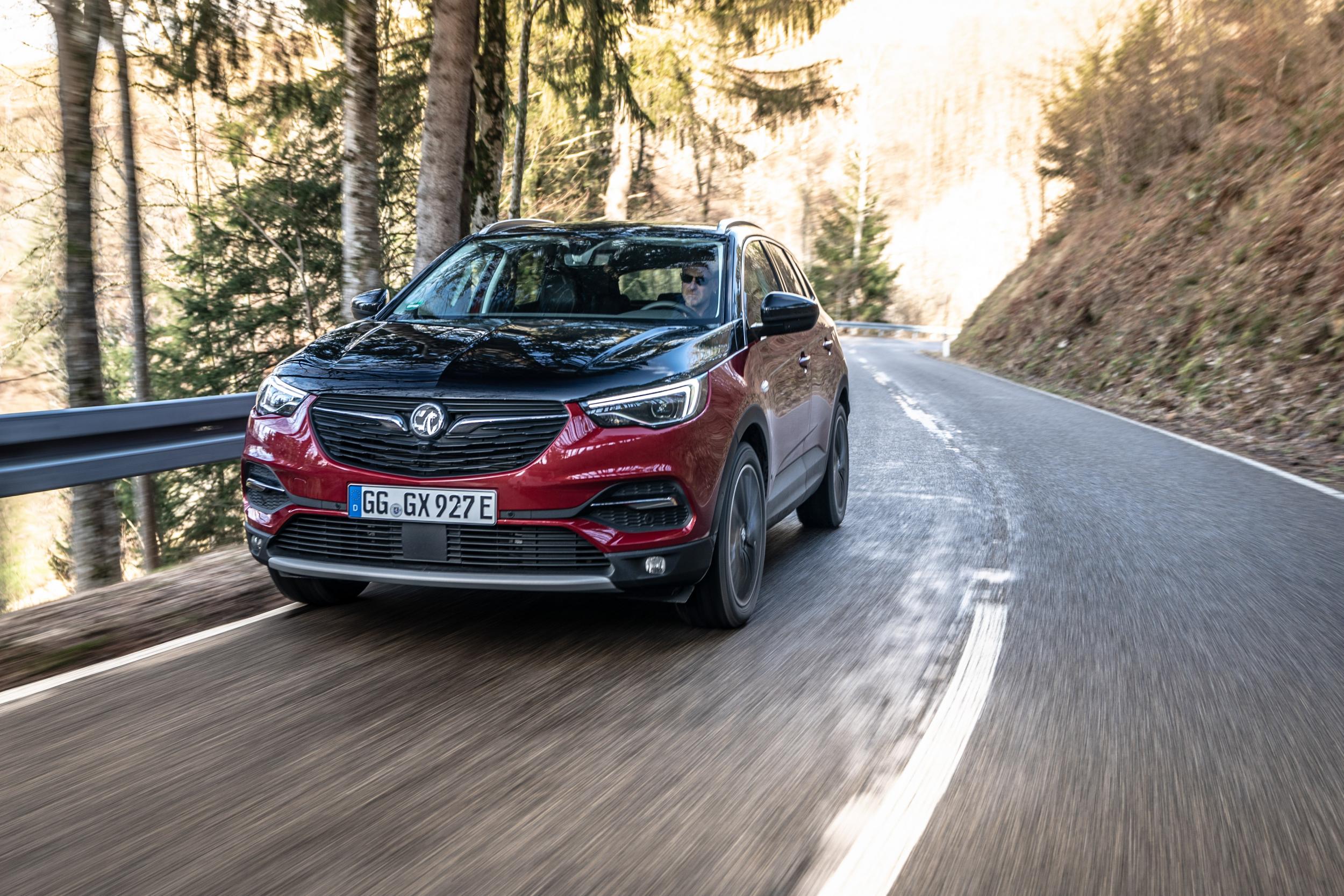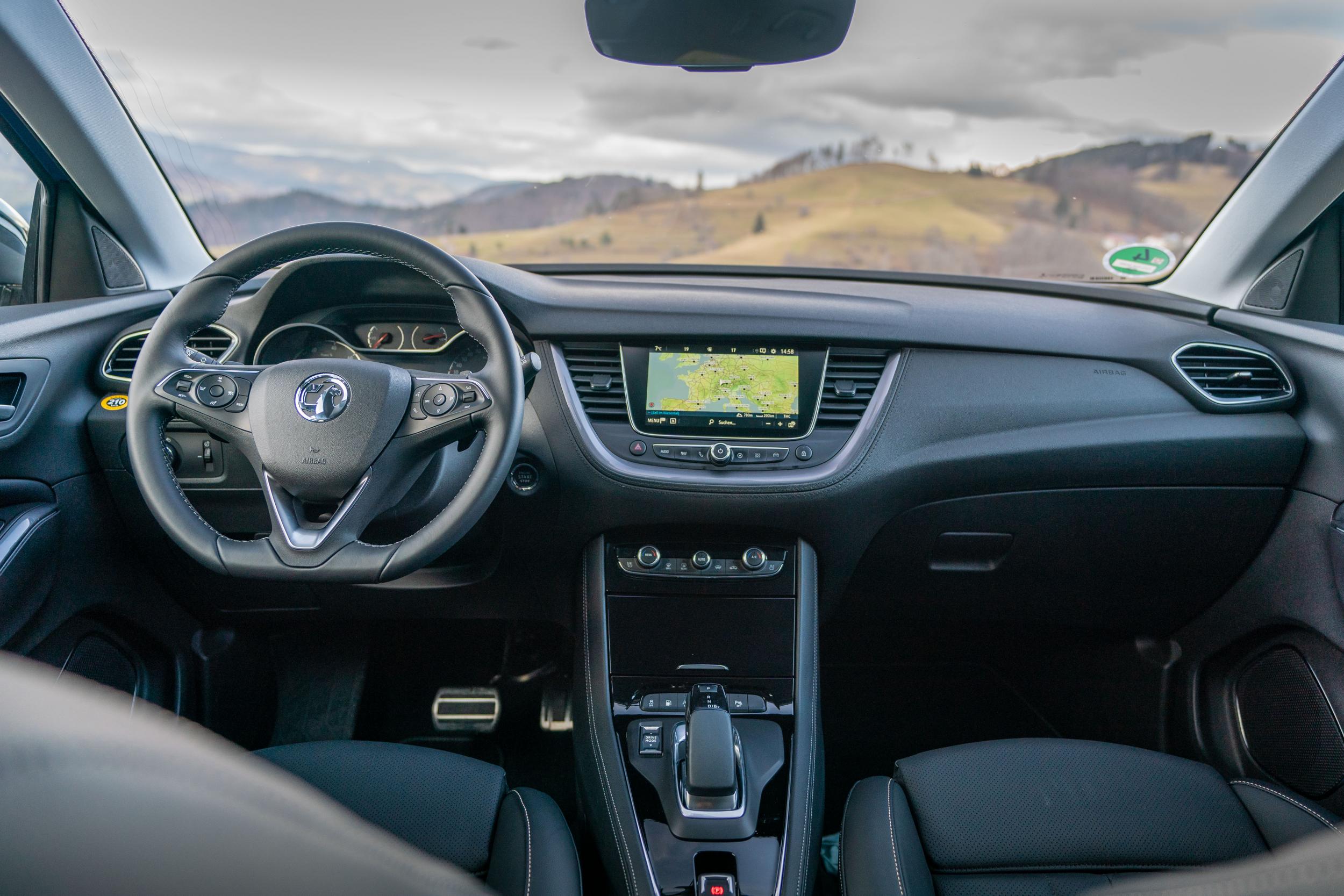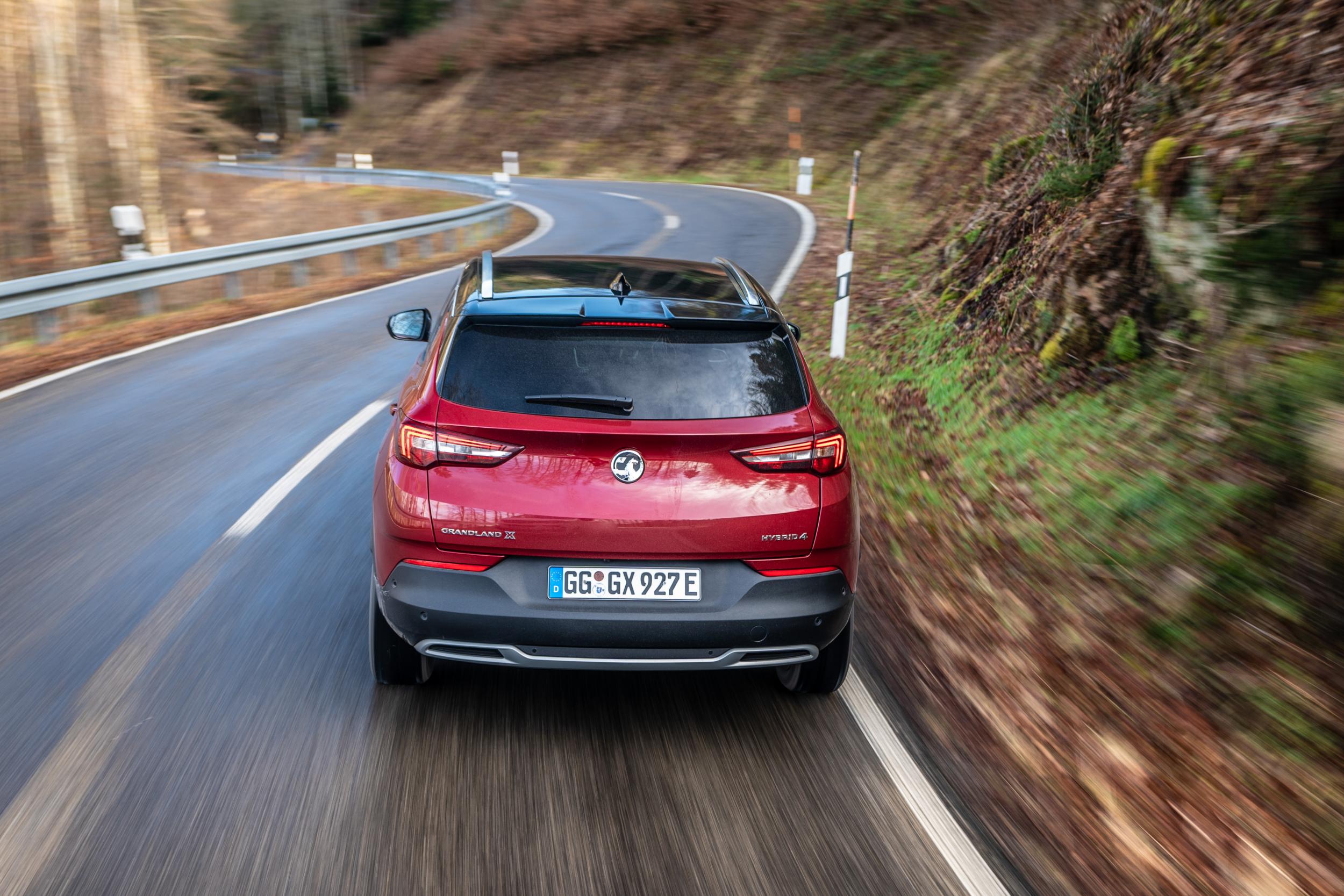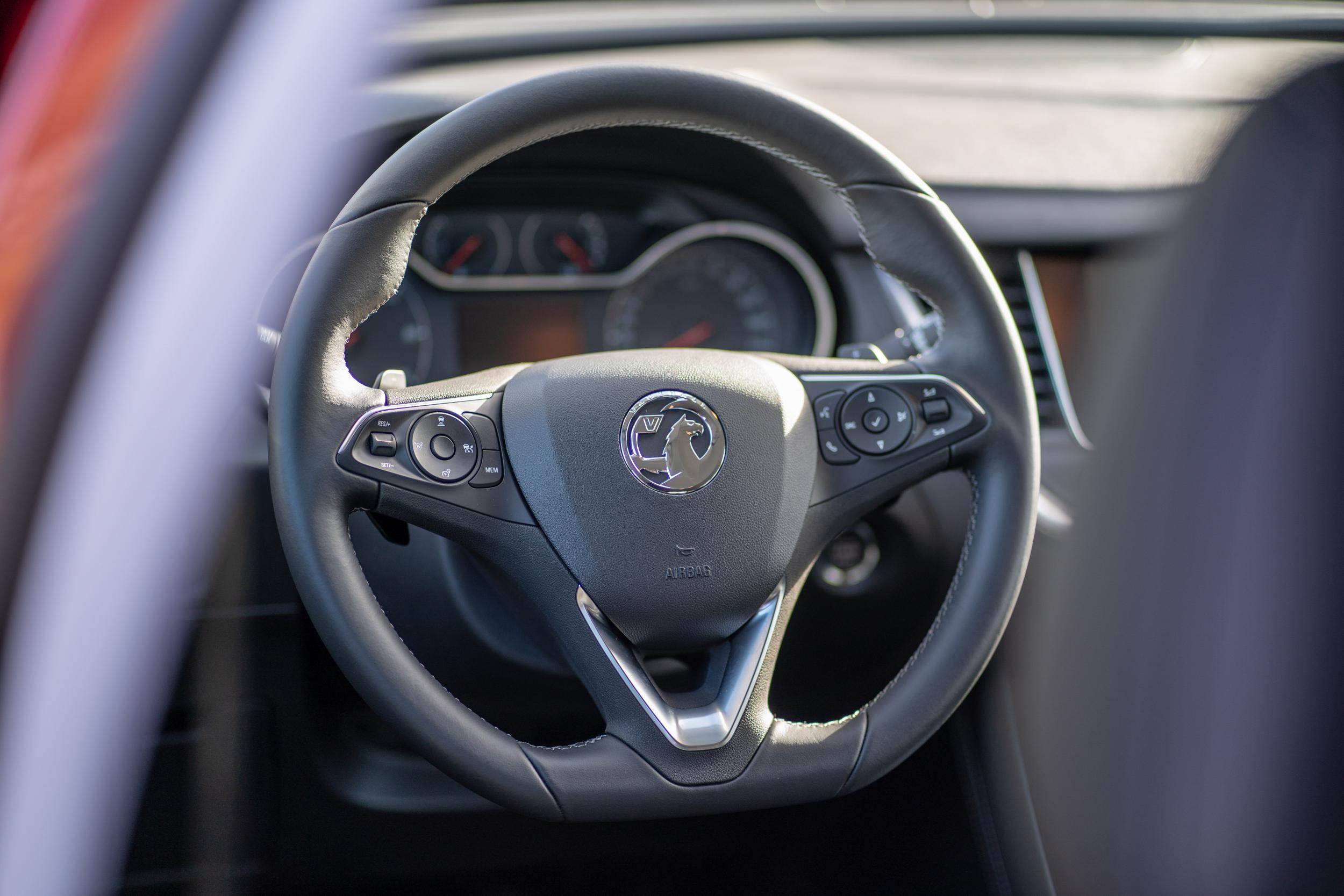Car Review: Vauxhall Grandland X Hybrid4 – almost marks the spot
With more electronics than you can shake a stick at, Vauxhall’s overdue entry into the hybrid market can deliver a theoretical 204mpg – but, asks Sean O’Grady, is it worth the hefty price tag?

Your support helps us to tell the story
From reproductive rights to climate change to Big Tech, The Independent is on the ground when the story is developing. Whether it's investigating the financials of Elon Musk's pro-Trump PAC or producing our latest documentary, 'The A Word', which shines a light on the American women fighting for reproductive rights, we know how important it is to parse out the facts from the messaging.
At such a critical moment in US history, we need reporters on the ground. Your donation allows us to keep sending journalists to speak to both sides of the story.
The Independent is trusted by Americans across the entire political spectrum. And unlike many other quality news outlets, we choose not to lock Americans out of our reporting and analysis with paywalls. We believe quality journalism should be available to everyone, paid for by those who can afford it.
Your support makes all the difference.Some 20 years after Toyota launched the first mainstream petrol-electric hybrid, the now ubiquitous Prius, (the Uber driver’s vehicle of choice), Vauxhall has finally gotten round to producing its first ever hybrid: the Grandland Hybrid4. I mean there’s arriving fashionably late to the party and there’s turning up just when the cool crowd are getting their coats, ready to move on to the next gig. Probably in a Uber Prius.
Never mind, the Grandland X Hybrid4 has come dressed for the invasion and can throw some interesting shapes. It is a complex sort of car, with a vast amount of clever engineering under its unprepossessing exterior. One bit at a time, then. First it’s got the usual hybrid set-up, with a quite potent 1.6 litre petrol engine married up to not one but two electric motors. They, in turn, are supported by a hefty battery pack with 13.2 kWh of power.
Some of the electricity for this lithium ion (laptop-style) pack is self-generated by the car itself (eg by harvesting energy otherwise lost in deceleration or braking). But this Grandland is also a plug-in hybrid electric vehicle (PHEV) which means you can indeed plug it in at home or at a public charge point to top up those batteries. It will take two or three hours to fully charge, depending on how fast the charger is.

Right, got that, then; but the engineering of this beast doesn’t end with the multifarious ways in which it can be fed. Its brain also has to work very hard when it is on the move. So, with a battery pack fully charged, it will normally start in silent electric-only mode, with the rear electric motor doing the work, and the one responsible for the front wheels taking a break. You’ll get roughly 30 miles out of the batteries before they are run down and the petrol engine is called upon to kick in.
Unless, that is you’ve pre-programmed the car to “save” some of its battery power for later, in which case the petrol engine will intervene that much earlier. You might want to do that if you’re entering a low emission zone later on, say. The torquey electric motors give the Grandland startlingly good acceleration from rest, while the petrol engine keeps it going until you reach three figures. It’s faster than it looks.

When the car is up to speed on the motorway it will have the petrol engine driving the front wheels, and the electric motors only intervening if the car’s sensors demand that four-wheel drive is needed, if you then go off road for example (a planned excursion, one hopes). Alternatively you can override all that and choose to run it as a four-wheel drive yourself.
The spec
Vauxhall Grandland X Hybrid4
Price: £43,400 (as tested; starts at £36,790)
Engine: 1.6 4-cylinder petrol + 2 x electric motors; CVT auto
Power output (hp): 200 (petrol) + 109 (electric)
Top speed (mph): 140
0 to 60 (secs): 5.9
Fuel economy (mpg): 204 (equiv)
CO2 emissions (g/km): 34
By and large the car’s microprocessor brain will set everything up automatically and the Grandland makes a good job of moving between its various driving modes seamlessly. The 8-speed gearbox works harmoniously throughout.
What else? Well how about yet more electronics. As with most cars in this price bracket, you’re gifted some handy driver aids – adaptive cruise control (autonomous braking and accelerating to maintain a constant gap with the vehicle in front), and lane assist, which “reads” road markings and nudges the steering if you start to wander out of line. It is easy to drive.
The Grandland gives little fuss as it goes about the millions of calculations it’s computing during every moment of its progress. It rides softly and rolls around a bit, a function of its higher centre of gravity, soft suspension and the sheer weight of all those batteries, electric motors and other kit on board. It’s got a slightly “sub-premium” feel to the cabin, that is compared to its upmarket rivals including the more stylish and habitable Volvo XC60 plug-in hybrid. However, the Grandland is a match for its more mainstream rivals from Honda (CR-V), Kia (Sportage), Ford (Kuga) and Nissan (Qashqai).

They’ve given the Grandland some nice alloy wheels and optional two-tone paint job which has the bonnet roof and pillars finished in a glossy black. It’s just the right side of bling and it suits the car’s lines well, breaking up the bulk a bit.
The Grandland X Hybrid4, for all its technical tour de force, is a machine that offers few surprises, good or bad. The Hybrid4 version is certainly more interesting than the standard, front-wheel drive petrol/diesel, and it is underpinned by an excellent chassis developed by Peugeot, which now owns Vauxhall and sister brand Opel (formerly GM Europe).
The Grandland will provide its enthusiasts with masses of raw material to entertain/bore anyone in earshot. However, this hybrid is never going to be as green as a “proper” electric car. We’ve been waiting far too long for a new one of those from Vauxhall, but a pure electric Corsa is promised for the coming months. That really will be progress.
Join our commenting forum
Join thought-provoking conversations, follow other Independent readers and see their replies
Comments